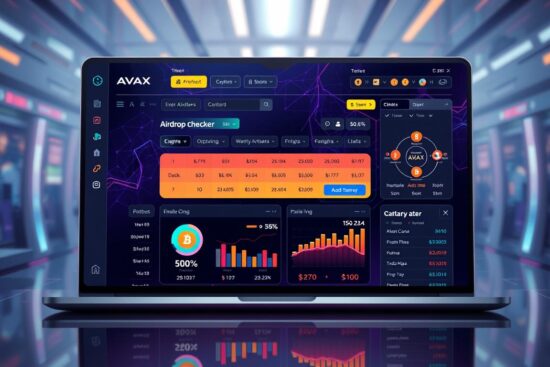
Arbitrum, a Layer 2 scaling solution for Ethereum, has seen rapid growth. It enhances transaction speeds and slashes gas fees. Projects are leveraging Arbitrum for airdrops, fostering community engagement and decentralization. This guide will outline the key criteria and steps for Arbitrum airdrop eligibility, ensuring you’re ready to maximize your rewards.
Eligibility for Arbitrum airdrops hinges on understanding each project’s specific requirements. Some airdrops are broad, while others focus on users actively engaging with Arbitrum. It’s vital to stay updated on upcoming airdrops and their criteria to successfully claim tokens.
The Hyperliquid L1 Genesis Event is a prime example of an Arbitrum-based airdrop. It allocated 31% of the HYPE supply to points holders. The remaining 38.888% was set aside for future emissions and community rewards. Hyperliquid’s Hyperliquidity Provider (HLP) required a 4-day lock-in for deposits, with any undistributed tokens added to future rewards.
To boost your chances of qualifying for Arbitrum airdrops, explore the Arbitrum ecosystem. Engage with projects like Harmonix, Hyperlend, and HyperSwap. By participating in these DApps and making transactions, you show your dedication to Arbitrum. This increases your eligibility for token distributions. Keep an eye out for initiatives like “HyperEVM season,” which could further incentivize Hyperliquid blockchain usage and DeFi applications.
Understanding Arbitrum Airdrop Benefits
In the rapidly evolving world of blockchain technology, airdrops have emerged as a powerful tool for projects to distribute tokens and attract new users. Airdrops play a crucial role in overcoming barriers to adoption by offering free tokens to users who engage with Layer 2 platforms like Arbitrum. These initiatives not only incentivize participation but also contribute to creating liquidity within the Layer 2 ecosystem.
What is an Airdrop?
An airdrop is a method of distributing tokens to a large number of wallet addresses, usually for free or in exchange for simple tasks such as following social media accounts or engaging with the project’s platform. Airdrops are designed to create awareness, encourage adoption, and reward early supporters of a project. By offering tokens at no cost, airdrops lower the entry barrier for users to participate in the ecosystem.
Claim Crypto Airdrop in 3 Simple Steps!
🌐 Step 1: Visit the Official Airdrop Page.
Dive into the action by heading to the official airdrop page, where all live events are waiting for you. Don’t miss out!
📱 Step 2: Use Your Mobile Wallet
Eligibility checks are mobile-exclusive! Grab your smartphone and ensure you’re using a mobile wallet to participate.
💰 Step 3: Meet the Eligibility Criteria
Make sure your wallet isn’t empty or brand new—only active wallets qualify. If one doesn’t work, don’t worry! Try again with another wallet to secure your rewards.
Importance of Airdrops in Cryptocurrency
Airdrops play a vital role in the cryptocurrency space, notably in Layer 2 solutions like Arbitrum. These solutions aim to enhance blockchain performance by offloading transactions from the main Layer 1 blockchain, such as Ethereum. By offering airdrops, projects can attract a significant number of users and boost adoption rates. Airdrops also promote liquidity provision by rewarding users who stake tokens or provide liquidity on decentralized exchanges (DEXs).
The importance of airdrops extends beyond user acquisition and liquidity. They serve as a means to raise awareness about the project and its underlying technology. Airdrops help educate users about the benefits of Layer 2 solutions, such as lower transaction fees and faster processing times compared to traditional Layer 1 blockchains. By participating in airdrops, users can gain exposure to these cutting-edge technologies and potentially benefit from token appreciation over time.
Key Criteria for Arbitrum Airdrops
To engage in Arbitrum airdrops and enhance your rewards, grasping the arbitrum airdrop criteria and eligibility standards is essential. Though specific requirements may differ across airdrops, certain general guidelines are applicable to most Arbitrum airdrops.
General Eligibility Requirements
Arbitrum airdrops generally reward users who are actively involved with the platform. This involvement can manifest through various activities. For instance, bridging assets from Ethereum to Arbitrum, utilizing decentralized applications (DApps) on Arbitrum, or staking tokens within the Arbitrum ecosystem. The more you engage with the network, the greater your likelihood of fulfilling the arbitrum airdrop eligibility requirements.

Specific Wallet Requirements
Some Arbitrum airdrops may also stipulate specific arbitrum airdrop wallet requirements. These could encompass holding a minimum balance of specific tokens, such as ETH or USDT, in your Arbitrum wallet. A history of transactions on the Arbitrum network over a particular timeframe may also enhance your eligibility.
It’s crucial to acknowledge the pivotal role of snapshot dates in determining airdrop eligibility. Arbitrum airdrops frequently capture a snapshot of user activity and wallet balances at a particular moment to ascertain who qualifies for the airdrop and the amount they will receive. Keeping abreast of upcoming snapshot dates is vital to ensure you meet the criteria at the appropriate time.
Participation in the Arbitrum Ecosystem
To enhance your chances of receiving airdrops in the Arbitrum ecosystem, active participation is crucial. Engaging with the platform through supported decentralized applications (DApps) and transactions showcases your commitment. This involvement not only keeps you updated on airdrop opportunities but also boosts your reward potential.
Using Supported DApps
Utilizing supported DApps on Arbitrum is an effective way to participate. These applications span various services, from DeFi to gaming and entertainment. Interacting with these DApps aids in the ecosystem’s growth and adoption, factors that influence airdrop distributions. Popular DApps include Uniswap, SushiSwap, and Aave.
Engagement Through Transactions
Engaging in transactions within the Arbitrum ecosystem is also vital. Regular activities like token swaps, liquidity provision, or transfers demonstrate your network involvement. Projects often review transaction histories to determine airdrop eligibility, rewarding active users. It’s important to balance transaction frequency and value while considering gas fees.
By September 2025, Mitosis, a prominent DApp on Arbitrum, had a Total Value Locked (TVL) of $71.98 million. This milestone highlights the ecosystem’s growth in DApp deployments and transaction engagement. Participating in campaigns like Expedition (weETH) allows users to earn MITO Points and exclusive rewards, encouraging active participation in the Arbitrum network.
Snapshot Dates and Their Significance
In the realm of cryptocurrency airdrops, snapshot dates are pivotal in defining eligibility. These moments capture the blockchain’s state, including token balances and user interactions. Projects leverage this data to pinpoint those eligible for their airdrops.
What are Snapshot Dates?
Snapshot dates mark specific instances when a project freezes the blockchain, documenting wallet states and token holdings. These snapshots are critical for evaluating airdrop eligibility. Users who possess a certain token quantity or have engaged in specific activities before the snapshot are deemed eligible for airdrop rewards.
Recent data reveals that 87% of successful blockchain ventures have employed airdrops in their marketing efforts over the past year. The value of tokens received per participant in legitimate airdrops has surged by 34% since November 2025. This underscores the escalating importance of snapshot dates.
How They Impact Airdrop Eligibility
Snapshot dates directly influence airdrop eligibility. Projects typically announce these dates in advance, allowing users to align their holdings with the required standards before the snapshot. For instance, a project might demand users hold at least 1,000 tokens in their wallets at the snapshot time to qualify for the airdrop.
It’s crucial to acknowledge that not all snapshot dates are publicly disclosed. Some projects opt for secret snapshots to prevent token manipulation or activity solely for airdrop purposes. In these instances, the snapshot’s significance lies in capturing genuine user engagement and loyalty.
Understanding the role of snapshot dates and staying abreast of upcoming ones can enhance crypto enthusiasts’ chances of receiving airdrops. This might involve maintaining token holdings, actively engaging with the project’s ecosystem, or participating in community discussions on social media.
Role of Governance in Airdrops
Governance tokens have become essential in the cryptocurrency world, notably on Layer 2 platforms like Arbitrum. These tokens empower holders to influence the project’s trajectory. By distributing governance tokens through airdrops, projects aim to instill a sense of community ownership and encourage active participation.
Importance of Governance Tokens
Governance tokens play critical roles within ecosystems. They enable token holders to vote on proposals, such as protocol changes, fee structures, or resource allocations. This democratic mechanism ensures the community’s voice is heard in project development. For instance, Uniswap distributed 400 UNI tokens to users, granting them voting power in its DAO. Optimism rewarded early adopters with governance tokens to shape its ecosystem.
These tokens also offer additional benefits, like staking rewards or exclusive features. Staking AAVE tokens in the Aave DAO enhances voting power and generates staking rewards. Participating in the Cosmos DAO allows staking ATOM tokens for governance and validator rewards.
How Governance Participation Affects Eligibility
Active governance participation is crucial for airdrop eligibility. Projects often reward users based on their engagement level. This includes voting on proposals, engaging in community discussions, or providing feedback on platform development.
By showing commitment to the project’s success through governance participation, users enhance their eligibility for future airdrops. Arbitrum (ARB) incentivized users with governance tokens to shape the network’s future, valuing an engaged community.
As the cryptocurrency landscape evolves, the importance of governance tokens and participation in airdrops is likely to grow. Engaging in decision-making processes not only gives users a voice in shaping their favorite projects but also positions them for potential rewards through future airdrops.
Community Contributions and Rewards
In the realm of cryptocurrencies, community engagement is crucial for the success and expansion of projects like Arbitrum. User participation is key in spreading awareness, driving adoption, and creating a sense of community. Many projects, recognizing the value of community contributions, offer rewards and incentives to encourage user involvement.

Types of Community Involvement
Users can contribute to the Arbitrum community in various ways, earning rewards in the process. Some common forms of involvement include:
- Participating in governance decisions by holding and using governance tokens
- Providing liquidity on decentralized exchanges (DEXs) built on Arbitrum
- Staking tokens to support the network’s security and earn staking rewards
- Creating educational content, such as tutorials, guides, and articles, to help new users understand and navigate the platform
- Reporting bugs, suggesting improvements, and contributing to the project’s development through forums or GitHub
Social Media Engagement
Social media platforms like Twitter, Reddit, and Telegram are vital for community engagement. By actively participating in discussions, sharing news and updates, and assisting others, community members can enhance their visibility. This demonstrates their commitment to the project. Some projects offer specific rewards for social media engagement, such as airdrops or exclusive access to certain features.
As the Arbitrum ecosystem expands, with weekly active addresses showing consistent growth and stablecoin numbers increasing by 1082.13% from March to October, community contributions and rewards will become even more pivotal. They will drive adoption and foster a vibrant, engaged user base.
How to Check If You’re Eligible
As the Arbitrum ecosystem expands, many users seek to participate in airdrops and earn rewards. It’s crucial to know how to verify your eligibility for upcoming airdrops. This section will guide you through the tools and methods for checking your participation history and assessing your eligibility for Arbitrum airdrops.
Using Wallet Tracker Tools
Wallet tracker tools are an effective way to check your airdrop eligibility. These tools offer insights into your participation history on the Arbitrum network. By connecting your wallet to a reputable tracker, you gain access to essential information like token balances, transaction history, and interactions with supported DApps.
Some notable wallet tracker tools for Arbitrum include:
- Arbiscan
- Arbitrum Portfolio Tracker
- Arbitrum Explorer
These tools provide user-friendly interfaces and comprehensive data. They make it simple to analyze your wallet activity and determine your eligibility for upcoming airdrops.
Verifying Your Participation History
Manual verification of your participation history is also crucial. This involves reviewing your transactions and interactions within the Arbitrum ecosystem. Focus on the specific criteria for each airdrop, such as:
- Minimum token holdings
- Participation in governance
- Engagement with specific DApps
- Community contributions
By verifying your participation history against these requirements, you can gauge your eligibility for upcoming airdrops. Take necessary actions to enhance your eligibility, such as increasing token holdings, participating in governance proposals, or engaging with the Arbitrum community.
Remember, airdrop eligibility criteria differ by project. It’s vital to stay informed and adjust your strategies as needed. Regularly checking your eligibility and actively participating in the Arbitrum ecosystem can increase your chances of receiving valuable rewards and contributing to the network’s growth.
Future Airdrop Trends in Cryptocurrency
The cryptocurrency sector is witnessing a surge in airdrops as a means for projects to disseminate tokens and interact with their communities. Emerging trends and upcoming initiatives are poised to redefine the airdrop landscape within the Arbitrum ecosystem and beyond.
Upcoming Projects to Watch
The Wise Monkey (MONKY) token airdrop for holders of Floki Inu (FLOKI), TokenFi (TOKEN), and ApeCoin (APE) is a notable upcoming event. With snapshot dates scheduled for November 29 for APE holders and December 15 for FLOKI holders, this airdrop has garnered considerable community interest. Jito Network is another project to monitor, as it plans to unlock 135.71 million JTO tokens, valued at approximately $462 million, on December 7, accounting for 103.01% of its circulating supply.
Ethena Lab’s USDtb stablecoin, backed by BlackRock’s BUIDL fund, and JUP’s plan to airdrop around $860 million worth of JUP tokens in January are also noteworthy. The Gala ecosystem is preparing to introduce its FILM token on December 5, 2025, as the platform’s official reward and utility token for user engagement and project funding.
Lessons Learned from Previous Airdrops
Airdrops can create significant buzz and elevate token prices, but it’s crucial to draw lessons from past distributions. The Hyperliquid airdrop, for instance, saw the HYPE token’s value surge by over 60%, peaking at $9.8 on December 1 from an initial $2 on November 29. Yet, the long-term token value sustainability post-airdrop remains a critical investor consideration, given the inherent market volatility and short-term price spikes associated with airdrops.
Case studies of successful airdrops, such as Uniswap and 1inch, underscore the significance of community engagement and equitable token distribution. By analyzing these examples and adapting to new trends, future airdrops can refine their approaches to enhance user participation and long-term viability. As the crypto environment evolves, innovations like AI-driven airdrops and Layer 2 solutions will likely become pivotal in improving the efficiency and security of token distributions.
















